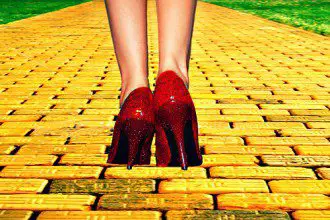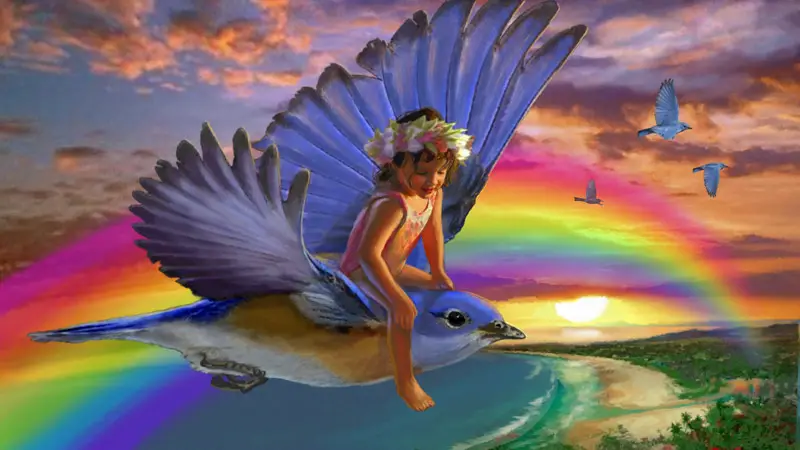9th January 2016
Contributing Writer for Wake Up World
In junior high school, I was a painfully shy student. It was to the point I would go through an entire week without peeping a single sound. While it was quite easy to shield my anxiety during most classroom activity, the lunchroom was always my greatest test. How could I possibly hide myself in a crowded cafeteria?
There was always one table in the back of the room which only had about five kids sitting there (the tables sat about 20-30 people). With so many empty seats at the table, it was the perfect spot for someone with severe, debilitating social anxiety. This group was the outcasts of the school. They wore the same clothes every day, never paid attention in class, didn’t follow the rules, had long straggly hair, and were already experimenting with drugs and alcohol. But, they were also different in the sense that they had no desire to fit in with the “cool kids.” They were perfectly content being in their own skin.
They also held different views on the world. They didn’t gossip about other students, blame teachers, or talk bad about the janitorial staff. In fact they talked about how they helped the janitors after school in exchange for being taught how to use certain tools. For it was these kids – the outcasts – who saw the world for how it was, they did not just blindly obey the forces that were trying to socialize them into robots.
“Irwin!” a teacher shouted from across the room, “What are you doing sitting there!?
She shouted as if my life was in imminent danger, sprinting across the room with her arms flailing like she was rescuing a drowning child. Her overly-dramatic antics created a major scene – the exact opposite of what a child with social anxiety desires. But, it was clear, this incident wasn’t about me – it was about her saving a kid from harm. She yanked my shoulder back and with fear in her eyes.
“You don’t have to sit here! Are they making you do this? You can sit somewhere else!”
Embarrassed, I slowly looked at my frantic teacher and then looked back over at the kids at this table. All of them had a look in their eyes as if to say, “It’s OK to leave. We don’t blame you.”
Then I looked back at my teacher and spoke with confidence in my voice for the first time in my life.
“I want to sit here.”
“What!?” She shook her head in disbelief, “You want to sit here? With them!?”
“Yes,” I looked back at them, “I want to sit here.”
She threw her arms up in disbelief as if another child was lost to these terrible monsters. But, my question was: Where was she as I sat alone in her classroom for a semester? Where was her dire need to “save” me when she noticed the bruises on my arm and cuts on my eye? In retrospect, it wasn’t about “saving” me, it was about the opportunity to save me in front of a crowd.
Over The Rainbow
This teacher is one of many that take part in the everyday presentation we put on for the world. We wake up in the morning, put on our masks, and then put on a play for the world to see. The thing I enjoyed about this group of kids was that they saw behind the phoniness of the world, and I felt together we shared a passion to discover the truth.
We celebrate truth-seekers throughout children’s books, films, and stories; yet, when children look to re-enact this behavior in “real” life, it is frowned upon.
In The Wizard of Oz, Dorothy is tired of the boring and dull life on the farm in rural Kansas. She is trying to explore and the adults continue to push her away, telling her to “go somewhere you can’t get into any trouble.” This turned into a breakthrough for Dorothy as she dreamed away of a different life, another dimension, a home void of the displeasures of going through the motions of life. She breaks into singing the classic song, “Somewhere Over the Rainbow” which describes this desire to go to a place where “dreams that you dare to dream, really can come true.”
But Dorothy is not the only character with this yearning for truth. Alice from Alice in Wonderland, also was in a depressed state of mind in which she couldn’t find the energy to do the things she once loved until chasing a white rabbit down his rabbit hole. In The Little Mermaid, Ariel is criticized and discouraged about seeking life above the sea and searching for a different existence. And Belle from Beauty and the Beast is considered odd because she does not go accept the norms of society.
We are attracted to these tales, because it is our innate desire to seek the truth beyond the mask. Everyone has this desire because it is how we are brought into this world, before it is blocked away from us by the masks we are told to wear.
The Twister
Quite often in the recovery community, you will hear people talk about their absolute worst moment on earth as a “blessing in disguise.” People talk about the point of hitting rock bottom was the time that the fall finally stopped, and gave them the opportunity to get back up.
Frustrated with her existence, Dorothy runs away from home in despair, just before gusty winds sweep over the farmland. Her family rushes into the cellar for shelter and locks the doors before Dorothy can make it back home. Finally Dorothy makes it inside the house and tries to seek refuge in her upstairs bedroom. While debris from the twister is whipping around, she is hit with an object and loses consciousness. Before she knows it her entire home and life is being turned upside down and carried away.
This is symbolic of addiction.
It is important to note that everything in this film is symbolic. Dorothy cannot get in the locked house and is trapped outside in this twister (addiction). Her home represents basic needs and values, and the fact she is locked outside is showing that something is being rejected and she is not receiving these basic needs. Dorothy finally gets in and she is struck in the head by a falling window and knocked unconscious, indicating her state of powerlessness to the twister.
After regaining consciousness, Dorothy peers out the open window as she is doing some soul searching in the midst of her active addiction. She starts seeing happy images of her aunt, uncle, farm hands, and animals. The final object she notices is Miss Gulch – the woman who was trying to take Toto away. Toto is always by her side and always knows what to do, hence, he is her intuition. Miss Gulch is Dorothy’s human shadow – the dark part of our self in which we constantly reject. It is our inner voice telling us we are not good enough. Once she recognizes Miss Gulch, she suddenly transforms into a witch with an evil laugh before Dorothy is brought to the ground by her own fear and confusion. It isn’t until this point that Dorothy recognizes she is engulfed in the twister (addiction).
Then, BAM! The houses crashes and Dorothy has hit rock bottom.
She wakes up and nobody is around. She is all alone in a dark and quiet home. She has no one to talk to and no place to turn. Everything she has ever loved has disappeared. It isn’t until this point that she is to begin the process of recovery and begin a new life.
Early Recovery – Journey Into the Self
Dorothy opens the door and the screen lights up in full color for the first time in the film. In the background, the music to “Somewhere Over The Rainbow” is playing as she steps outside into a beautiful new existence.
This is symbolic of early recovery – an inward journey to self-discovery.
We have arrived at that place we dreamed about, the place in which we could be ourselves, and a place in which we were free. We have found our way over the rainbow, without the use of drugs or alcohol for the first time.
Dorothy is first greeted by the Good Witch of the North, Glinda, who looks more like a fairy or angel. This is the part of our recovery in which we start to realize that things aren’t always as they appear. The things we used to view as “old and ugly” can be presented in a new light of majestic beauty.
To Dorothy’s surprise she even comments, “I never heard of a beautiful witch before.”
Dorothy is then informed that her house landed on the Wicked Witch of the East, who has been oppressing the munchkins for years. The munchkins are fun-loving people who represent our playful youth in which we love things unconditionally, forgive easily, and live in the present moment. They have been trapped by the destructive part of ourselves (Wicked Witch). Dorothy is treated as a queen by her inner child (munchkins) for finally putting an end to the mask she has been wearing.
While the munchkins view this situation as a miracle, Dorothy claims it was no miracle at all. This is the blessing of rock bottom, the twister, our past mistakes, and the worst parts of our existence typically tend to be the greatest blessing in disguise.
Source Article from http://wakeup-world.com/2016/01/09/over-the-rainbow-the-yellow-brick-road-to-enlightenment/
 RSS Feed
RSS Feed















 January 9th, 2016
January 9th, 2016  Awake Goy
Awake Goy 

 Posted in
Posted in  Tags:
Tags: 













